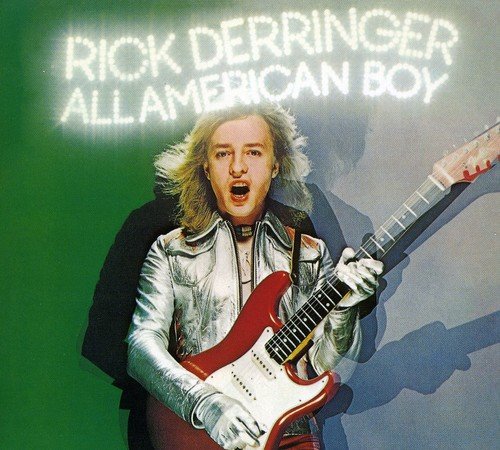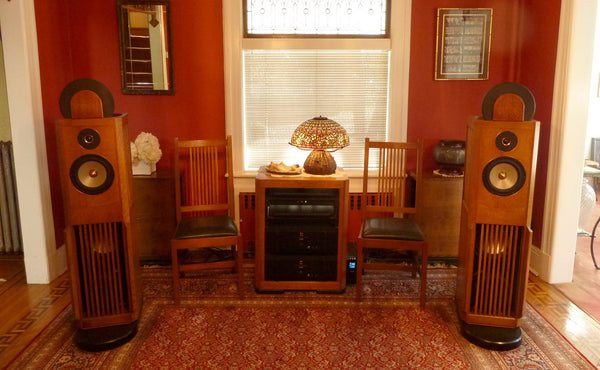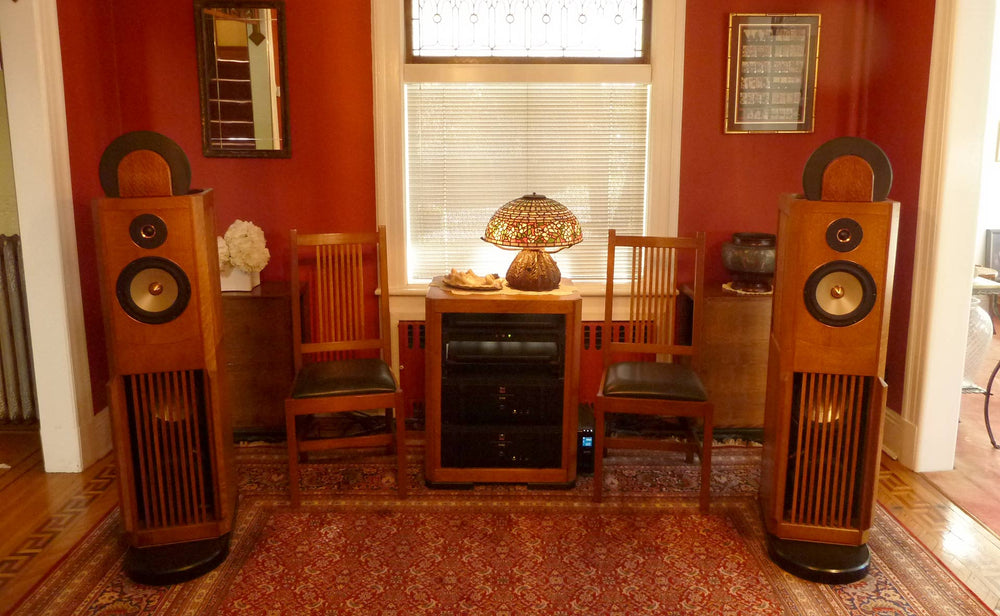In last issue’s Vintage Whine I ran through my personal list of the ones that got away—those special pieces of audio gear that I owned in the past and somehow let get away, to my everlasting regret. Judging by the volume and intensity of responses, I’d say that almost every audio enthusiast has a list of gear they wish would magically reappear.
I also threw out the blue-sky topic of “if you could have any single piece of audio gear, what would it be?”
I pinged readers, friends, colleagues, and Copper contributors for their lists—and here are some of their responses. You’ll notice that once a piece of gear is mentioned, it often provokes an “oh, YEAH!!” response from others. EPI, Audio Research, Conrad-Johnson, and Spica in particular are regarded with fondness:
–I have sold off hundreds of items and can’t think of one I regret. I tend to make the decision to sell an item and then wait a few years to see if pre-seller’s remorse kicks in before actually letting go. If I could have one item, its a tough choice, it would probably be a Klangfilm Europa Junior Klarton or space permitting (a movie theater?), a Euronor.–Jonathan Halpern, Tone Imports.
–My old CJ PV5, what a little sweetie. Lemme add a Nikko receiver, the 501 I think, with Advent speakers and their single-meter cassette deck. But it’s the PV5 I miss… also had a Luxman 1040 that was pleasing.–Jonathan Scull, audio maven/legend, Scull Communications.
–Probably my old Counterpoint SA-5000, though generally absence makes the heart grow fonder in these cases…–John DeVore, DeVore Fidelity.
–Tannoy GRF Corner Horns, 15″ Monitor Gold units, in Sapele Mahogany. Sold them to help pay the deposit on a house.  —Haden Boardman, Audio Classics UK, Copper.
—Haden Boardman, Audio Classics UK, Copper.
–I wish i had my original Nait amp and NAT tuner back! Wish I could have: Big Western Electric theater horns and 555 drivers.–Beau Ranheim, NY audiophile/chef extraordinaire.
—Leak TL12 plus. The little EL84 mono amps and preamp were just beautifully taken care of and sounded great. Later I had a bunch of the TL12 point one with the KT66 valves which are much better, but those were just beautiful to watch, touch and listen…I cant remember who I sold them to or for how much. Western Electric 18 field coil woofer pair, but I sold those for a lot of money! I did keep my Ampex 350, still have it and absolutely love the stainless steel feel of it, the human size bolts and parts you can grab with your hands, the 3 motor construction, no plastic at all: and it beats almost all Tape machines I have listened to! Had since I was 16, got it for 5 bucks!–Jorge Sadurni, Sadurni Acoustics.
–Not listed among the anointed but I’d go for a pair of Spica TC-50s.—Michael Fremer, Analog Planet, Stereophile.
–An Audio Research SP-11b. Sold it when I wanted to raise some extra cash. Not that I was displeased with what I bought subsequently…an Audible Illusions Modulus 3, which I still have, in fact…but man, I should never have let that SP-11b go.–Frank Doris, ex-TAS, industry veteran. –-I’d go for SP 11 too!–Fremer, redux.
—Wright Sound 300B amps, designed by George Wright of Kent, WA. Just insanely beautiful-sounding little amps with Magnequest/Peerless TFA-204 trannies. George was a friend who passed away recently. I’d buy them back in a heartbeat. Wish I could have:Tannoy rectangular GRFs with vintage drive units.–Alex Halberstadt, ex-Listener, pundit, biographer of Doc Pomus.
—Original Snell Type A’s.–Walter Schofield, industry veteran, SVS. Always wanted to own a pair, but never did. Even though I have a better vinyl setup now, I still loved how my first “really good” turntable rig showed me how much music is in the grooves of records. Ca. 1979: Rega Planar 3, Grace G707 Mk II, GAS Sleeping Beauty Shibata, Threshold M1 step-up. It was really musical to me.–Dave Kakenmaster, industry veteran, GoldenEar Technology.
–My Epicure 10 speakers. Oh, and my Technics SL-I-don’t-remember-the-model-number DD turntable. I should add that this was my first “real” stereo gear, purchased in the 1970s in an actual, brick and mortar stereo store in suburban Philadelphia. Because, of course, you needed all that extra information. —Steven Folberg, unofficial Rabbi to the audio industry.
—My old Acoustat Monitors. Come to think of it, I would love to get another set of EPI 180 speakers. Those got me through college and right up until I bought my Acoustats. Spendor BC-1. Always wanted a set of those.–Steve Lefkowicz, Positive Feedback.
—Altec 604-8Gs rescued from a rubbish skip outside Theatre Projects, Covent Garden, London then later reconed and put into Ported enclosures by the late Australian Acoustical Engineer Richard Priddle. Wish I still had them as a reference to compare with my current “Bouncy’ things!–Graham Craig, painter and audio experimenter/artist.
—Celestion Ditton 66. —Ronald Neale, Aussie audiophile.
–My old stash of JBL pro horns and drivers, oh man what I could do with those now……–Lou Hinkley, industry veteran, Daedalus Audio.
–No real regrets over things I’ve sold, but the one vintage thing I still have a lust for would be a super clean pair of Altec Valencias.—Mark Almirall, Cali audiophile.
—VAC 90s.—Peter Breuninger, AVShowrooms.
—Scott 310e tuner and Grado walnut tonearm.–Clark Johnsen, The Wood Effect, Positive Feedback.
–For me, Tandberg 1040 receiver, open reel deck, and EPI speakers. Classics.–Barnaby Fry, industry veteran, Audio Plus Services.
—Audio Research SP3A.–Doug Henderson, industry veteran, B&W Group USA.
—Revox G36 that I stupidly sold at an Audiomart swap meet in NJ many years ago. Then there’s the Naim 32.5/Hicap/135s I had at the peak of my flat earth period, not to mention the Marantz 9s.–Michael Trei, turntable king, Sound & Vision.
–Easy. Conrad-Johnson PV11 preamp. Second would be my Spica TC 50s.–Wil Hinds, audiophile, bass monster. Yes! Years ago I sold my C-J PV2ar for next to nothing, and I wish I still had that, too. The vintage product that I owned but sold and now want back is the McIntosh mono FM tuner I owned briefly in the early 70s (I don’t remember the model number—MR something). The vintage product I’ve never owned but would most enjoy having is the EMT 930.–Art Dudley, country squire, Listener, Stereophile.
–One of my Sony TC766-2 half track.–Robert Gaboury, Arteluthe.
–A Tandberg Sølvsuper stereo receiver from 1973 – the first component I opened and managed to short… Not very popular with my step mom who owned it. But it sounded great  . —Knut Skogrand, Skogrand Cables.
. —Knut Skogrand, Skogrand Cables.
—Duelund Behemoth horns.–Frederik Caroe, Duelund.
—Moscode 600 hybrid amp.–Kemper Holt, Enjoy the Music.
–My Marantz 10b in the wood cabinet I had painted gloss black by my friend Jack Shafton when he was at CWD— BUT I still have my Crown SX700 open reel tape machine which I played last night. I still have a pair of Quad 57‘s and a pair of Acoustat Model 3‘s —David Hardin, industry veteran, Audio Center.
–I was raised on a pair of Nelson Reed 804b‘s… i loved those damn loudspeakers ,as that ATC mid dome is to die for.–Randy Kunin, audio artisan, Randall K.
–-I never owned a pair, but the single most interesting speaker I ever heard was the Hill Plasmatronics!! Yes, I really would like to hear one again! Marcel, up at his showroom in Scarsdale had a pair – That Pink Floyd with the helicopter was stupendous, truly.–Randall Bradley, audiophile.
—Audio Research SP10 preamplifier – wait, I still have the one I bought in 1984!–John Atkinson, man/myth/legend, Hi-Fi News, Stereophile.
—EAR G88. Gone, to my regret. And: IRS V or an EAR Discmaster.–Dan Schwartz, bassist extraordinaire, ex-TAS, Copper.
–Four perfect Cunningham globe CX250 tubes from 1937. To pay the rent. I’m such an asshole. And a 1955 Esquire.–jc morrison, legendary designer, Fi/Sequerra/Electro-Harmonix/Silbatone/lab jc.
—Audio Research SP3a-1 mk2 improved modified, REL Precedent Tuner- both abducted.–Jeff Joseph, industry veteran, Joseph Audio.
—Quad speakers.–Dr. Bob Odell, ex-PS Audio.
—My Pioneer RT-707 RtR. Loaned it to a friend and never saw it again. Oh, and the Hovland HP-100 preamp w/phono – had to give it up when they folded. Incredibly transparent.–Elliot Kallen, shakuhachi demon, industry veteran, The Tweak Shop.
–A ’68 white Fender Strat.–Michael Lavorgna, artiste, AudioStream. OK, Guitars – a ‘64 SG with factory Bigsby that was mint and for which I got 1/10th its current value and a 65 strat that I traded straight across for a Santa Cruz acoustic – I was dumb.–Steven Stone, TAS, Audiophile Review. Yup. My ’55 hardtail Strat, too.–Art Dudley, again. [I keep telling these guys: musical instruments have NOTHING to do with audio! Sheesh!!–Ed.]
–I really haven’t owned a lot of gear, but I do wish I had held on to my Vandersteen 2Ce Sigs.–Julien Therrien, audiophile.
–My picks are so easy (but so painful): My RCA-sourced Ampex 300 RTR (It was used in their red field-recording truck) & my TWO Fletcher MDC-800 “The Arm” arms. One arm I gave away, the other I sold for like $100, and the Ampex (and all the right tube preamps I sold (ouch) together for $300 . . . woe and perdition. Also wish I had my Acros and the fresh LS-55s.–Herb Reichert, audio poet, Listener, Sound Practices, Stereophile.
–Miss our Magneplanar Tympani 1d. Sold them off when our first born started crawling. Got tired (and concerned) when I was having to fish him out from behind the speakers all the time.–Dan Muzquiz, industry veteran, Blackbird Audio.
—Ohm F. Although by now if I still had them they prolly wouldn’t work. The old joke was you needed 200 Watts to drive them, and 201 to blow them up. Oh! And of course I wish I still had my Quad 57. I do not have a proper room for either the Fs or Quads.–Ken Furst, industry veteran, furstmarketing.
—NAD 3020. I’ve still got a pair of Spica TC-50s. The cabinets are rather beat up after three decades of moves, but I couldn’t bear to sell them. It would be like selling a faithful and well – loved dog just because it got old.-–Rob Doorack, audiophile, ex-Listener.
–Toss up between a Yamaha YST-C11, a JVC PC-V55, and a JVC JR-S301 with the perfectly weighted tuner wheel.–Malachi Kenney, political flak/coder/hacker, ex-PTA, Copper.
—Sansui AU5900 amp – Tannoy Berkeley Speakers- Denon DRM44HX.–Johan Coorg, legendary party animal, industry veteran, KEF.
—I have it: Marantz 2230 driving ESS AMT-1s. Set up in my home office.–Mark Larsen, Esq., keeper of audio industry secrets.



























